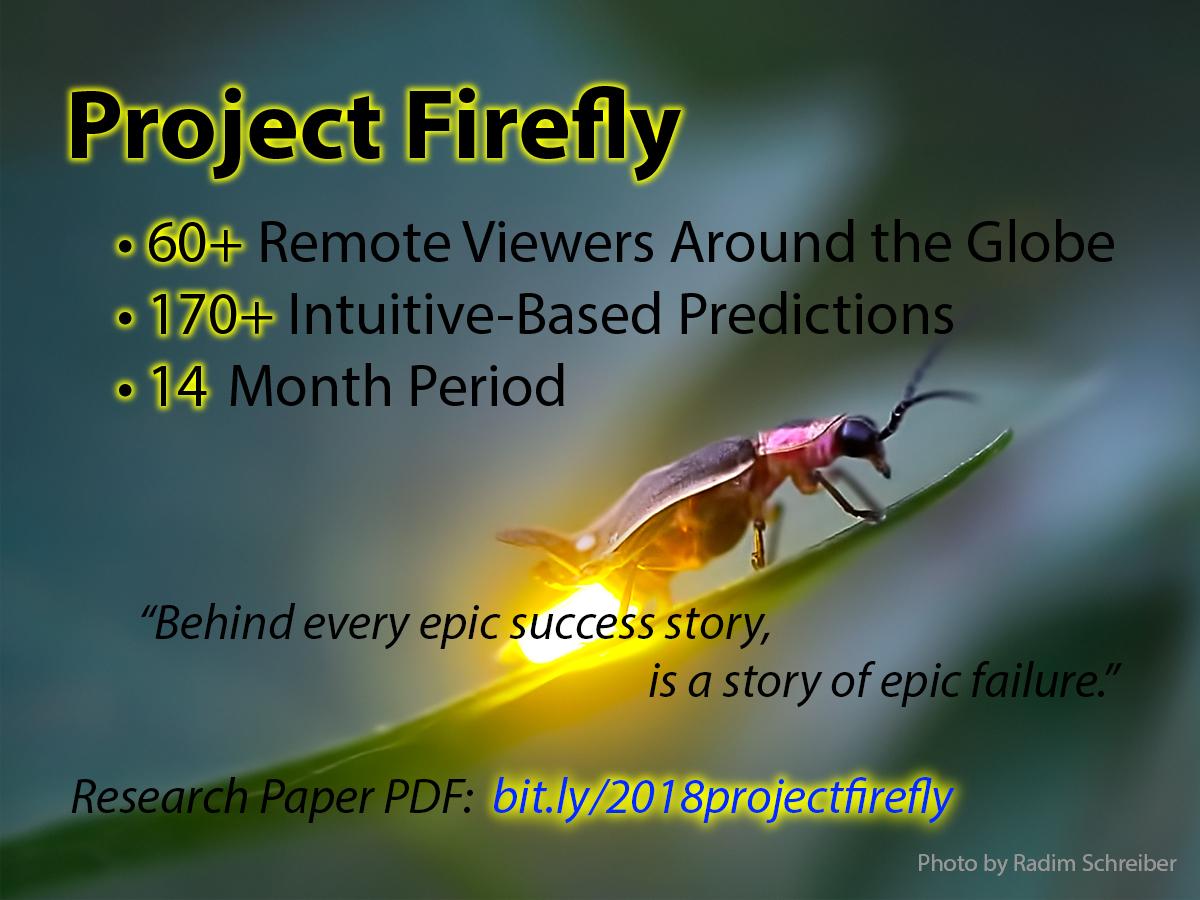An Ethnographical Assessment of Project Firefly:
A Yearlong Endeavor to Create Wealth by Predicting FOREX Currency Moves with Associative Remote Viewing
By Debra Katz, Igor Grgić, and T. W. Fendley
Project Firefly Research Paper Link
Abstract—More than 60 remote viewers contributed 177 intuitive-based associative remote viewing (ARV) predictions over a 14-month period. These viewers comprised pre-established, self-organized groups cooperating under the rubric of “Project Firefly” (PFF), and were supervised by experienced ARV group managers operating under the umbrella of the Applied Precognition Project (APP), a for-profit organization exploring precognition and leveraging ARV methodology as an investment enhancement tool.
Based on predictions from the ARV sessions, PFF used the Kelly wagering strategy to guide trading on the Foreign Exchange (FOREX) currency market. Viewers performed under typical scientific protocols, including double-blind conditions, appropriate randomization, etc., using a variety of ARV application methodologies. Investors, many of whom were also participants (viewers and judges), pooled investment funds totaling $56,300 with the stated goal of “creating wealth aggressively.”
Rather than meeting that goal, however, most of the funds were lost over the course of the project. Beyond merely reporting on an extensive remote viewing experiment, the present study is an examination of what went wrong, providing lessons learned for further ARV research whether involving for-profit activities or basic research, as the principles are relevant to both. Associative remote viewing is a research paradigm that harkens back to early days in science where competent non-academic researchers can provide datapoints and breakthroughs in a field typically peopled solely by professional researchers.
Adapting a form of ethnographic study, we refer not only to the statistical results produced by the PFF effort, but also employ a mixed-methods qualitative approach to exploit the information and insights contributed by numerous participants about what happened, what worked, and what didn’t. This creates a reference we believe will be useful for those conducting future applied precognition projects involving multiple participants or groups. We feel that the insights gleaned from this study will improve both ARV experimental design and execution of research protocol, benefitting professional and amateur researchers alike in their future ARV experimen- tation.
Our thanks to the Journal of Scientific Exploration for publishing the paper and to our fellow participants from the Applied Precognition Project for their efforts.


